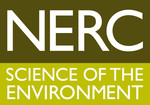New particles in the atmosphere: <nobr>two non-classical examples</nobr>
Lower Atmosphere - Projects
Project Reference: NE/E005942/1
Link: http://gtr.rcuk.ac.uk/projects?ref=NE%2FE005942%2F1#
 Small particles play several very important roles in the atmosphere. They provide surfaces on which exotic chemical reactions can take place, and they act as the condensation nuclei ('seeds') on which water condenses to form ice particles and cloud droplets. Particles may also reflect visible and UV sunlight back to space (cooling the earth), and absorb outgoing infra-red radiation (contributing to the 'greenhouse' effect). For thermodynamic reasons (decreasing entropy), it is actually quite difficult to form new particles in the atmosphere from gaseous constituents. This process is known as homogeneous nucleation: a few molecules condense together to form a stable cluster (about 1 nm in size), which then becomes the building block for further growth. This proposal will examine two examples of homogeneous nucleation that occur in very different regions of the atmosphere: iodine oxide particles, which form in the marine boundary layer from iodine species that are produced biogenically in the ocean; and meteoric smoke particles, which form in the middle atmosphere from the metals and silicon oxides that ablate from meteoroids. For both these systems, we want to follow the evolution of the particles from single molecules to particles containing about 1 million molecules (diameter about 50 nm), in order to understand what controls the rate of growth and the shapes of the particles. Preliminary work shows that the particles are fractal-like ('fluffy'), with large surface areas which often facilitate chemical reactions. For example, meteoric smoke particles may influence some of the chemistry controlling ozone in the stratosphere. We will also examine the properties of these particles as ice condensation nuclei. Iodine oxides have recently been observed at high concentrations over coastal Antarctica, and could be a source of ice nuclei near the surface. Meteoric smoke particles are most likely the nuclei for noctilucent clouds. These ice clouds, which form around 83 km at high latitudes during mid-summer, were first observed at the end of the 19th Century. This has led to speculation that they are an early indicator of climate change in the middle atmosphere. Finally, we will address the question of how meteoric smoke particles descend from around 80 km to the earth's surface. The particles have been detected both by capturing them with a rocket-borne instrument flying above 70 km (in this project we propose to analyze some of these captured particles), and by detecting cosmic iridium and platinum in ice cores from Greenland and Antarctica. We will use the Met Office's general circulation model to study the transport pathways during present-day conditions and during a glacial maximum, in order to interpret the ice core record over several hundred thousand years.
Small particles play several very important roles in the atmosphere. They provide surfaces on which exotic chemical reactions can take place, and they act as the condensation nuclei ('seeds') on which water condenses to form ice particles and cloud droplets. Particles may also reflect visible and UV sunlight back to space (cooling the earth), and absorb outgoing infra-red radiation (contributing to the 'greenhouse' effect). For thermodynamic reasons (decreasing entropy), it is actually quite difficult to form new particles in the atmosphere from gaseous constituents. This process is known as homogeneous nucleation: a few molecules condense together to form a stable cluster (about 1 nm in size), which then becomes the building block for further growth. This proposal will examine two examples of homogeneous nucleation that occur in very different regions of the atmosphere: iodine oxide particles, which form in the marine boundary layer from iodine species that are produced biogenically in the ocean; and meteoric smoke particles, which form in the middle atmosphere from the metals and silicon oxides that ablate from meteoroids. For both these systems, we want to follow the evolution of the particles from single molecules to particles containing about 1 million molecules (diameter about 50 nm), in order to understand what controls the rate of growth and the shapes of the particles. Preliminary work shows that the particles are fractal-like ('fluffy'), with large surface areas which often facilitate chemical reactions. For example, meteoric smoke particles may influence some of the chemistry controlling ozone in the stratosphere. We will also examine the properties of these particles as ice condensation nuclei. Iodine oxides have recently been observed at high concentrations over coastal Antarctica, and could be a source of ice nuclei near the surface. Meteoric smoke particles are most likely the nuclei for noctilucent clouds. These ice clouds, which form around 83 km at high latitudes during mid-summer, were first observed at the end of the 19th Century. This has led to speculation that they are an early indicator of climate change in the middle atmosphere. Finally, we will address the question of how meteoric smoke particles descend from around 80 km to the earth's surface. The particles have been detected both by capturing them with a rocket-borne instrument flying above 70 km (in this project we propose to analyze some of these captured particles), and by detecting cosmic iridium and platinum in ice cores from Greenland and Antarctica. We will use the Met Office's general circulation model to study the transport pathways during present-day conditions and during a glacial maximum, in order to interpret the ice core record over several hundred thousand years.
